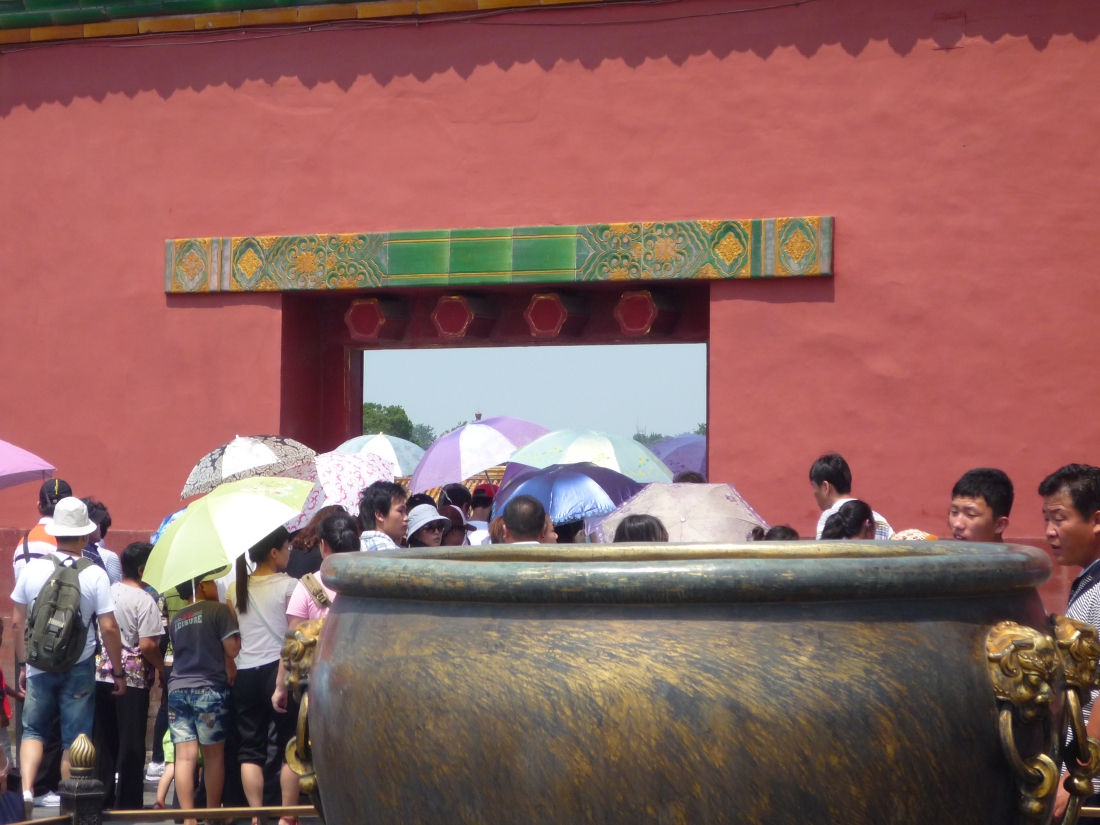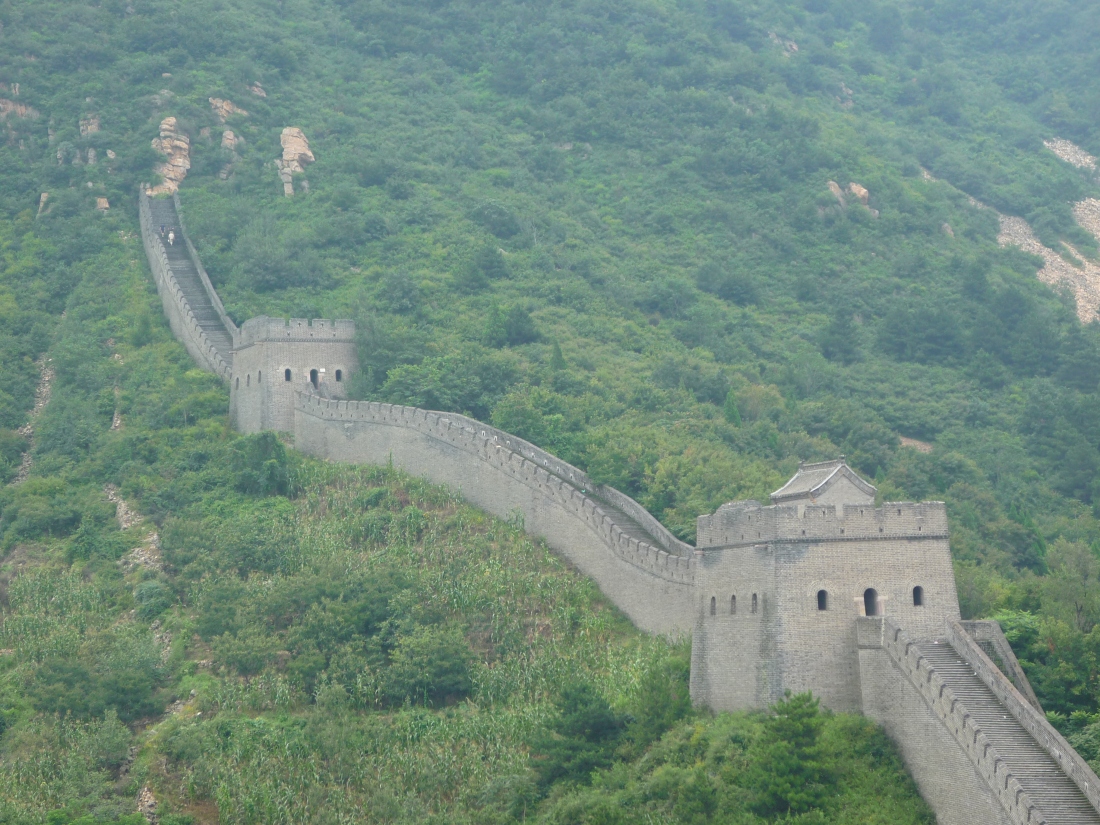The main function of most official buildings is to symbolically structure space. Distinguish an inside from an outside, or establish a cosmic centre point.
The main point of focus for tourists in Beijing is a door – Tian An Men, the door of Heavenly Peace – which leads into the – walled in – Forbidden city, under the auspices of late President Mao.
The structure of the Chinese capital is clearly centered on the Forbidden city, the real and symbolic centre of imperial power. Yet, in imperial times, the religious centre of the country was slightly further South, at the Temple of Heaven. Also the forbidden city itself does not have a clear centre point – godly statue, tomb, or the emptiness of an inner shrine. Visiting it is more like a pilgrimage inside a maze, walking by a succession of temples and houses, along courtyards and through doorways, without ever reaching a clear destination, or feeling ‘that’s where it is’.
The Chinese word for China means ‘the Middle Country’. Accordingly (?) the main symbol of the country is not a centre point, but a great wall, marking the limit of that ‘middle ground. That wall, itself, may have served a symbolic function, as much as one of defence: it runs along mountain tops, underlining the natural landscape surrounding China.
The Great Wall is not one continuous piece of masonry, but a scattering of constructions, built at different periods in different places, which make sense as a defence mechanism, but only roughly connect. Even in the core sections, in the Northern section of Beijing and Tianjin municipalities, the wall is not continuous. Sometimes a moutain was high enough to be deemed inpassable, and the wall stops half-way down its slopes.
Walls and doors may the ultimate symbolic monuments of continental cities. Along the coast, in seaports, people are more likely to build up – a lighthouse or a Colossus, to serve as a beacon indicating the safe harbour for incoming ships. The Pearl of the Orient, in Shanghai, may have that symbolic function. And we may monitor the shift of China from a continental to a sea power – if it happens – by following the dominant imagery: walls and temples on a mountain top, or beacons and skyscrapers along waterways.
Or, maybe, the maze like quality of the Forbidden city and the Great Wall will combine with the intricacies of the Chinese natural and artificial river system, and give rise to a specific Chinese space symbolism, adapted to the information age and in line with a a certain national tradition, with no central point of focus – but a network at the core.





